With the main chapter of my thesis coming out this past week in the Proceeding of the Royal Society B, I wanted to discuss some of the exciting results here. As I’ve mentioned before my research involves how plant feeding insects use polarized light as a cue to help location and select among plants. In this paper we show in a series of behavioral experiments that the cabbage white butterfly (Pieris rapae) uses the polarization of leaf reflections to recognize host plants.
Feeding, and laying eggs on unsuitable host plants can result in reduced egg production, slow larval growth, and even larval mortality (Jaenike 1978). To avoid these negative consequences insects use visual, infrared, scent, tactile, or taste cues to locate and recognize suitable plants (Prokopy and Owens 1983, Renwick and Radke 1988, Takács et al. 2009, Reeves 2011). The polarization of reflections from plant foliage have been hypothesized to be another such cue but until now had not been evaluated with behavioral tests (Kelber et al. 2001, Hegedüs and Horváth 2004). In addition to behavioral tests, for polarized light to be a plausible cue, the polarization of these reflections should differ among plant species and these insects should be perceive these differences in polarization.
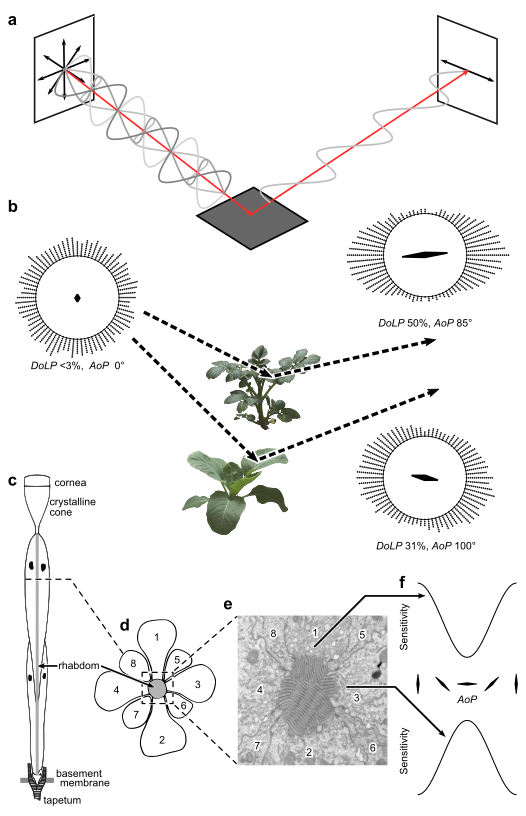
Plant leaves polarize sunlight in a direction parallel to the surface (Fig. 1a, Foster et al. 2018). This direction, or axis of polarization (AoP, 0–180°), is dependent upon the relative positions of the Sun, the leaf surface, and the foraging insect (Fig. 1b). The degree of linear polarization (DoLP, 0-100%), the fraction of the light that is polarized in the predominant AoP (Fig. 1b), is also affected by the pigments, hairs, waxes, and surface undulations of leaves (Grant et al. 1993). Cabbage white females lay eggs on plants in the mustard family (Brassicaceae) such as cabbage, which possess a wax layer on their leaves giving them a matte appearance (Prokopy and Owens 1983) and a lower DoLP compared to many other plants such as potato (Fig. 2). We measured the DoLP of variety of plant species by comparing images taken with polarizing filter at different rotations (photo polarimetry, Foster et al. 2018).
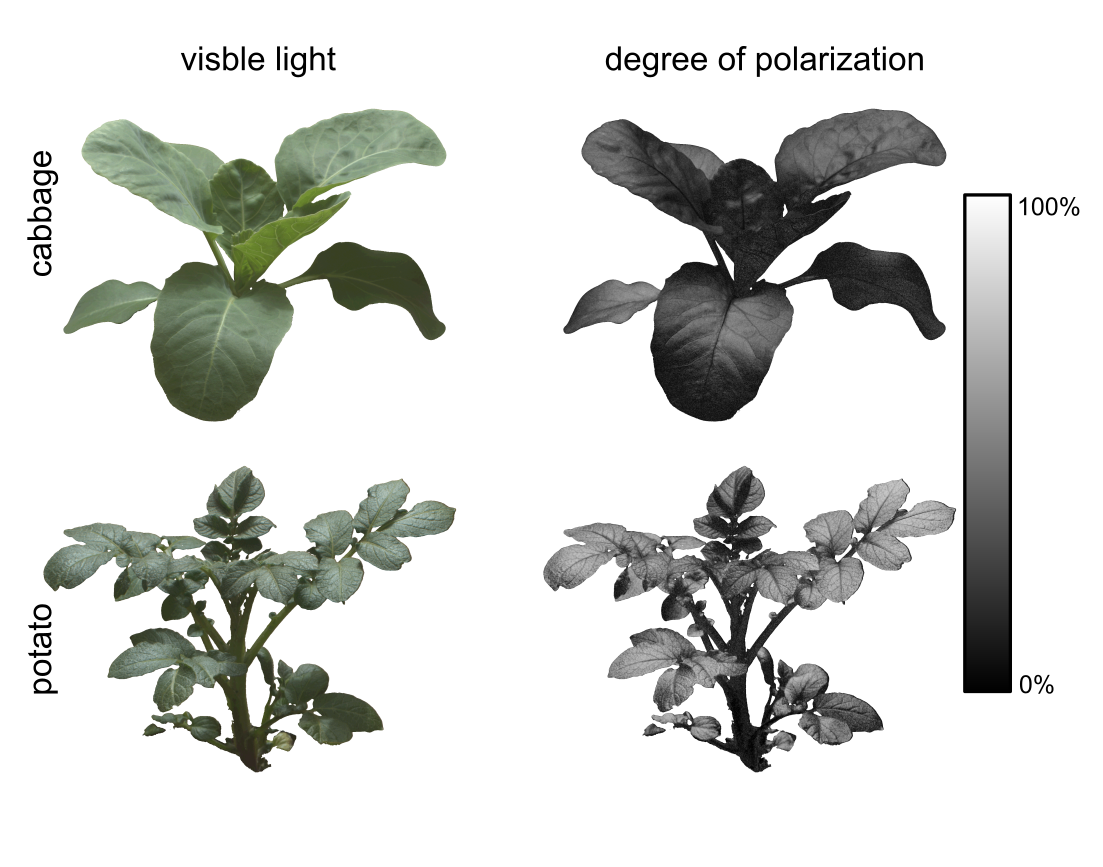
The photoreceptors of insects and other arthropods including those of P. rapae can sense polarized light. Like a fiber optic cable the rhabdom guides the light’s passage through the ommatidium (Fig. 1c–e). The rhabdom is composed of microvilli (small projections of the cell membrane) from several photoreceptors (Horváth and Varjú 2004). It is these microvilli where light is absorbed and a neurological response begins. This light is more easily absorbed by a photoreceptor when it’s AoP aligns with it’s microvilli (Fig. 1f). This difference in absorbance is greatest when the DoLP is high. The polarization sensitivity of a photoreceptor can be negated if it’s microvilli are curved or if their direction twists along the rhabdom. Electrophysiological recordings and electron microscopy of P. rapae photoreceptors have shown several of these photoreceptors are sensitive to polarized light (Blake et al. 2019).
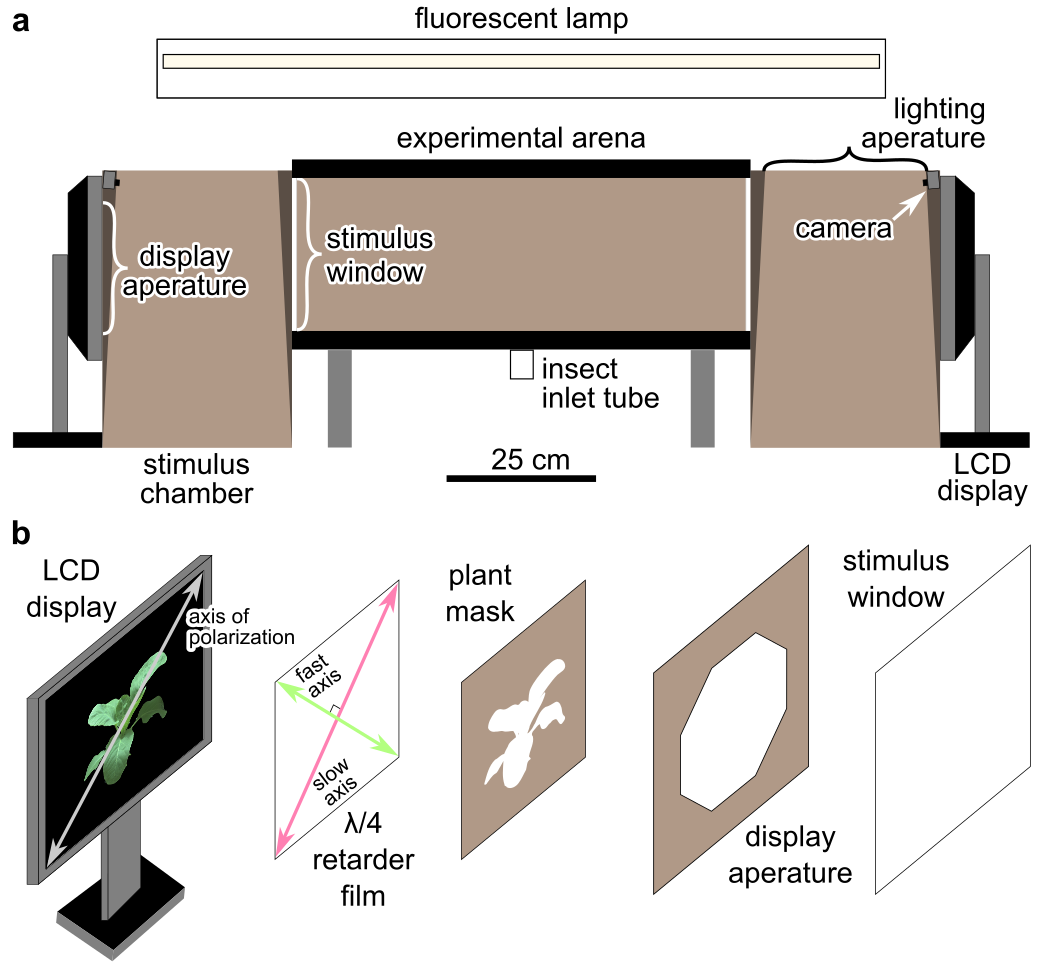
Adding to this evidence, we performed a series of behavioral experiments. We began by giving female butterflies a choice between cabbage and potato plants, but we soon moved to using images of these plants displayed on LCD computer monitors. We used cameras to monitor their choices within a closed arena (Fig. 3a). The use of these monitors allowed us to control the brightness, color, AoP, and DoLP of plant images. LCD use polarizing filters in their construction and produce highly polarized light. The DoLP can be controlled using a quarter-wave retarding film placed over the monitor, while the AoP can be changed by rotating the monitor and counter rotating the image (Fig. 3b).
When we offered cabbage white females a choice between images of cabbage or potato plants, with matching DoLPs, females selected the cabbage image (Fig. 4). However, when we offered females a choice between the same images but with DoLP reversed between the two species the preference was completely reversed with most females preferring the potato image. This unexpected result showed that the DoLP was a more important cue in these bioassays than colour, intensity, or shape of the plant images.
This is the first study documenting that the DoLP of plant reflections serves as a cue for insect herbivores to identify suitable plants to feed and lay eggs on. Based on our results, and considering the typically small differences in leaf colour between plant species (Grant 1987), it seems that differences in DoLP among plants could be more informative plant cues than shape, colour, or brightness. Recent investigations have revealed that polarization sensitivity is widespread among insect taxa (Wachmann 1977, Hardie 1979, Wernet et al. 2012, Mishra 2015, Ilić et al. 2016), including many herbivores other than the cabbage white. A better understanding of how polarized light cues affect plant choices in insect pests could have several applications in integrated pest management.
The full paper can be accessed here:
Blake AJ, Go MC, Hahn GS, Grey H, Couture S, Gries G. 2019 Polarization of foliar reflectance: novel host plant cue for insect herbivores. Proc. R. Soc. B 286: 20192198. http://dx.doi.org/10.1098/rspb.2019.2198

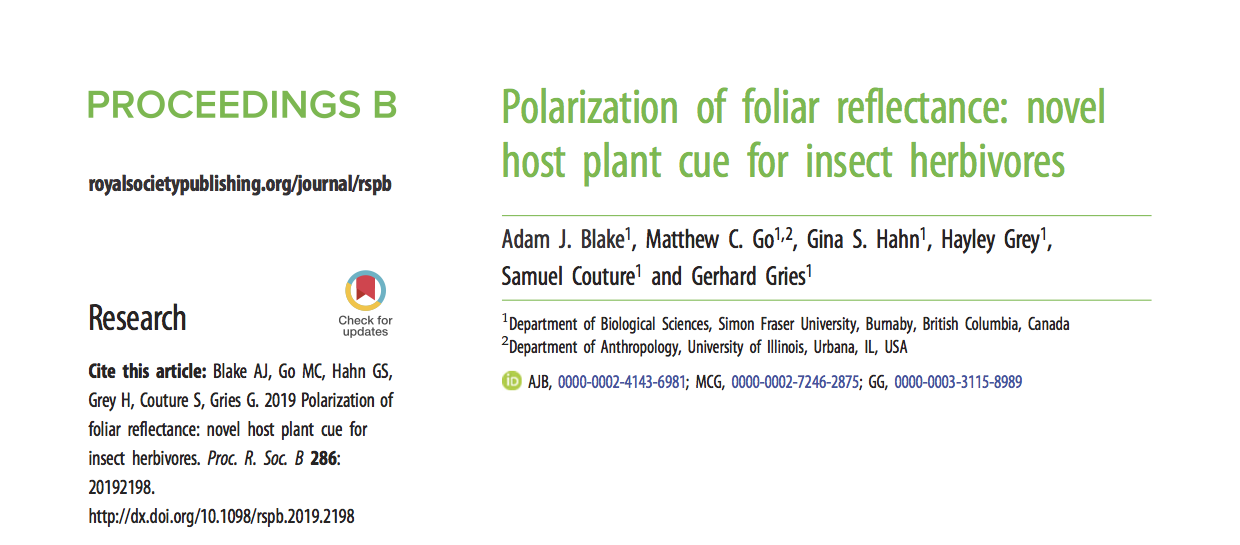
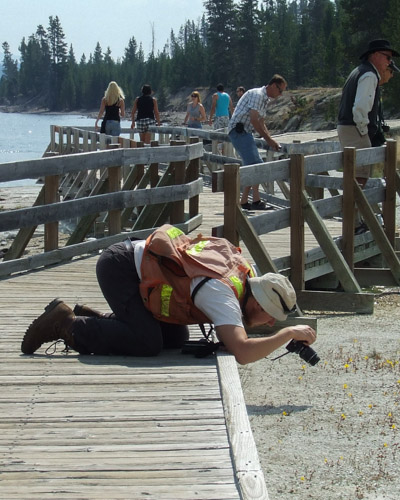
Follow Me